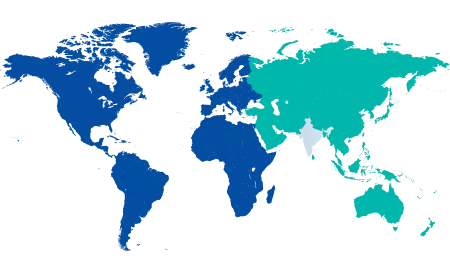-
Centre of
Excellence
Centre of Excellence
Other Specialities
- Allergy and Immunology
- Andrology
- Anesthesiology
- Dental Medicine
- Dermatology
- Diabetes and Endocrinology
- Ear Nose Throat
- Electrophysiology
- Fetal Medicine
- General Medicine
- General Surgery
- Geriatric Medicine
- GI Surgery
- Growth and Hormone
- Gynaec Oncology
- Hand Surgery
- Hemato Oncology
- Hematology
- Hepatobiliary Surgery
- ICU and Critical Care
- Infectious Disease
- Internal Medicine
- Interventional Radiology
- Kidney Transplant
- Lifestyle Clinic
- Medical Gastro
- Medical Oncology
- Microbiology
- Minimal Access Surgery
- Neonatology & NICU
- Nuclear Medicine
- Nutrition And Dietetics
- Ophthalmology
- Oral Maxillo Facial Surgery
- Paediatric Urology
- Pain Medicine
- Parkinson Disease and Movement Disorder
- Pathology
- Pharmacy
- Physiotherapy
- Plastic And Cosmetic Surgery
- Psychiatry
- Pulmonology (Respiratory and Sleep Medicine)
- Radiology
- Radiotherapy (Oncology Radiation)
- Renal Sciences
- Surgical Gastro
- Surgical Oncology
- Transfusion Medicine
- Vascular and Endovascular Surgery
Speciality Clinics
- Doctors
- Dhakuria
- International Patients



Clinics








- Self Registration
- Mars - Ambulance
- Corporate & PSU
- Insurance Helpdesk
- Awards And Achievements
- Careers
- Contact Us

Vertebral Body Resection
Vertebral Body Resection Specialist in Dhakuria
Vertebral Body Resection is a surgical procedure, also known as Corpectomy, which is used to treat various conditions affecting the vertebral bodies. It involves the removal of one or more damaged or diseased vertebral bodies, usually along with the intervertebral discs above and below the removed vertebrae. This procedure aims to relieve pressure on the spinal cord or nerves, often due to tumours, fractures, infections, or severe spinal deformities.
Based on the location and extent of the pathology, this procedure can be done through various approaches, such as anterior (from the front), posterior (from the back), or lateral (from the side). Vertebral Body Resection is a complex and demanding procedure that requires careful planning and precise execution. Manipal Hospitals in Dhakuria have an experienced team of surgeons skilled in performing such complex spine care procedures with precision. Though it is a challenging procedure requiring extensive postoperative rehabilitation, it provides significant relief from pain and neurological symptoms. It is often reserved for treating life-threatening conditions affecting the spine where less invasive treatments have failed or when there is a significant risk to the spinal cord or nerve roots.
FAQ's
Patients with severe spinal diseases or neurological issues that substantially impair their mobility, spinal stability, or quality of life are usually candidates for Vertebral Body Resection. After careful evaluation of the patient’s condition and overall health, the decision is made for this surgery. Typical circumstances that could call for a Vertebral Body Resection include:
- Primary and metastatic spinal tumours
- Traumatic and osteoporotic fractures
- Spinal infections, such as osteomyelitis and discitis
- Spinal deformities like kyphosis and scoliosis
- Congenital spinal deformities
- Herniated disc complications
- Advanced cases of spinal degenerative disc disease
- Spondylolisthesis
- In cases of failed previous spinal surgeries
Before undergoing this procedure, our spine care specialist will ask you to undergo certain preoperative tests. Also, be sure to inform the doctor of all the medications you are consuming and ask which ones to stop before the surgery. May also provide you with specific instructions, such as fasting before the surgery and detailed guidelines to follow in the days leading up to the procedure.
The surgeon will make an incision to access the spine, either through an anterior, lateral, or posterior approach, based on the affected vertebrae location. The damaged vertebral body is replaced, and the gap is filled with a bone graft or a cage filled with bone graft material. This is crucial as it helps in maintaining spinal alignment and promotes the fusion of the surrounding vertebrae. Metal implants, such as screws, plates, or rods, may be used to provide immediate structural support to the spine during the healing process.
Based on the complexity of the case, the Vertebral Body Resection surgery can take up to several hours. The cases involving multiple vertebrae may even take longer.
As it is a complex spinal surgery, the recovery process is longer, requiring several days to a week of hospital stays. Proper postoperative care is required for proper healing, which includes physical therapy, pain management, and using braces to support the spine until it heals. It can take several months for a full recovery.
Just like any other major surgery, Vertebral Body Resection carries various risks, such as bleeding, infection, nerve damage, spinal instability, and complications related to anaesthesia. It may also involve a non-union, where the bone graft does not fuse properly, potentially requiring additional surgery.
Physical therapy is crucial for the recovery process after the Vertebral Body Resection surgery. It helps in restoring the flexibility, strength, and mobility of the spine and its surrounding muscles. Our spine care staff will also provide you with a personalised rehabilitation program, designed as per your specific needs for faster recovery.
The success of this surgery is based on various factors, such as the patient's overall health, the expertise of the surgeon, and the underlying condition being treated. Most of the patients experience significant relief from pain and observe improvement in neurological function, but the treatment outcomes can greatly vary.
There are some non-surgical and less invasive procedures available as alternatives to this complex surgery. These include medication, physical therapy, Laminectomy, or Discectomy. However, these alternatives may not be effective in severe cases where Vertebral Body Resection is indicated.
If the condition that requires Vertebral Body Resection surgery is not treated, it may worsen, leading to increased pain, further neurological deterioration, or even life-threatening complications. During your consultation, our doctor will explain to you the specific risks of not treating your condition and the benefits associated with VBR surgery, so that you can make the right decision.
Vertebral Body Resection is usually a major open surgery, but with advancements in technology, some aspects of the procedure can be performed using minimally invasive techniques. It all depends on the specific case and the surgeon's expertise. However, full resection typically requires a more extensive surgical approach.
Home Dhakuria Specialities Spine-care Vertebral-body-resection



You’re on Our Indian Website
Visit the Global site for International patient services











